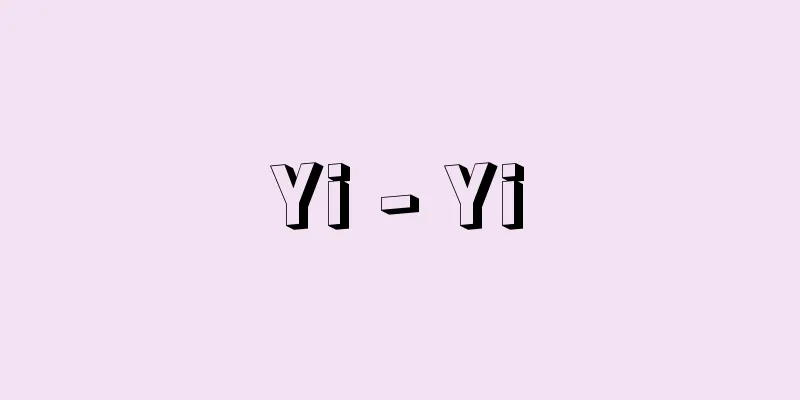Yi - Yi

|
Since ancient times, this accessory was used by the nobility as part of their official attire, and is the part that hangs down at the back of the crown. The Iranian-style lacquer crown, introduced from China in the late Asuka period, had the hair tied up on top of the head in a tube called a koji, and a bag-shaped piece of silk or cloth was worn over it. The base of the topknot was tied with a string made of coarse cloth, and the remaining part of the topknot was left hanging down at the back. This hanging part was called a koji, and due to its shape it was also called a swallowtail. During the Heian period, when crowns became larger and more rigid, the koji also became wider and longer, and were simply sewn down at the back. During the Kamakura period, this became a formality, and the base of the koji was inserted from above into a koji jar attached to the crown, allowing it to bend and hang down. In times of disaster or emergency, the tsū was rolled up and fastened with a plain wooden oak clip. Those used by military officers were rolled inwards and called ken'ei, and fastened with a black painted clip. Military officers of the sixth rank or lower folded only the outline of the tsū and inserted it into a clip, calling it a sai'ei. In contrast, those that hung down normally came to be called su'ei. [Takada Yamato] [Reference] |©Shogakukan "> Thread Source: Shogakukan Encyclopedia Nipponica About Encyclopedia Nipponica Information | Legend |
|
古代以来、貴族階級が公服に用いた冠(かんむり)の付属物で、冠の後方に垂らす部分。飛鳥(あすか)時代後期に中国より導入されたイラン式の漆紗冠(しっしゃかん)は、髪を頭上に束ねた髻(もとどり)を、巾子(こじ)という筒に入れ、その上から袋状に仕立てた絹や布をかぶり、髻の根元を共裂(ともぎれ)の紐(ひも)で結んで締め、結び余りを後ろに垂らした。この垂らした部分を纓とよび、その形より燕尾(えんび)ともいった。平安時代に冠が大きく固くつくられるようになると、纓も幅広く長いものとなって、後ろにただ綴(と)じ付けて垂らした。鎌倉時代になると形式化して、纓の元を冠に取り付けた纓壺(えいつぼ)に上から差し込んで、しなって垂れ下がる形となった。凶事または非常の際には、纓を巻いて白木の柏夾(かしわばさみ)によって留めた。武官の用いるものは、内に巻いて巻纓(けんえい)とよび、黒く塗った夾木(はさみぎ)で留めた。六位以下の武官は、纓の輪郭である纓筋(えいすじ)だけを折り曲げて纓壺に差し込み、細纓(さいえい)といった。これに対して普通に垂らしたものを垂纓(すいえい)とよぶこととなった。 [高田倭男] [参照項目] |©Shogakukan"> 纓 出典 小学館 日本大百科全書(ニッポニカ)日本大百科全書(ニッポニカ)について 情報 | 凡例 |
Recommend
Fish field - Gyoden
This refers to fish dengaku. Fish is marinated in...
clinozoisite
...In the strict sense, it is a mineral with the ...
Dionysius [I] - Dionysius
Tyrant of Syracuse. He used the common people to g...
Epi-patography - Epipatography
…However, there are many findings that have been ...
Hawaiian Islands (English spelling)
Located in the central Pacific Ocean, these island...
Cavalleria rusticana (English spelling)
…In 1984, he left school and became the conductor...
Austrian briar (English spelling)
…2 n = 14, 21, 28. (2) Rosa foetida Herrm. (= R. ...
Adams, John
Born October 30, 1735 in Braintree, Massachusetts ...
Pelopidas jansonis (English spelling)
...In the genus Pelopidas, the Brown Skipper Pelo...
Invenzione - Invention
...That is, it is a painting with a history or st...
Hitachi Plateau
A plateau of the Pleistocene (Pleistocene) spread...
Murzilka (English spelling)
…In France, there are many excellent Catholic chi...
Manaslu [Mountain] - Manaslu
A high peak in the Himalayas, northwest of Kathman...
Osprey (English spelling)
A bird of the order Accipitridae (Accipitridae) (i...
Andean flamingo
...This species is the most abundant, with 3 mill...









